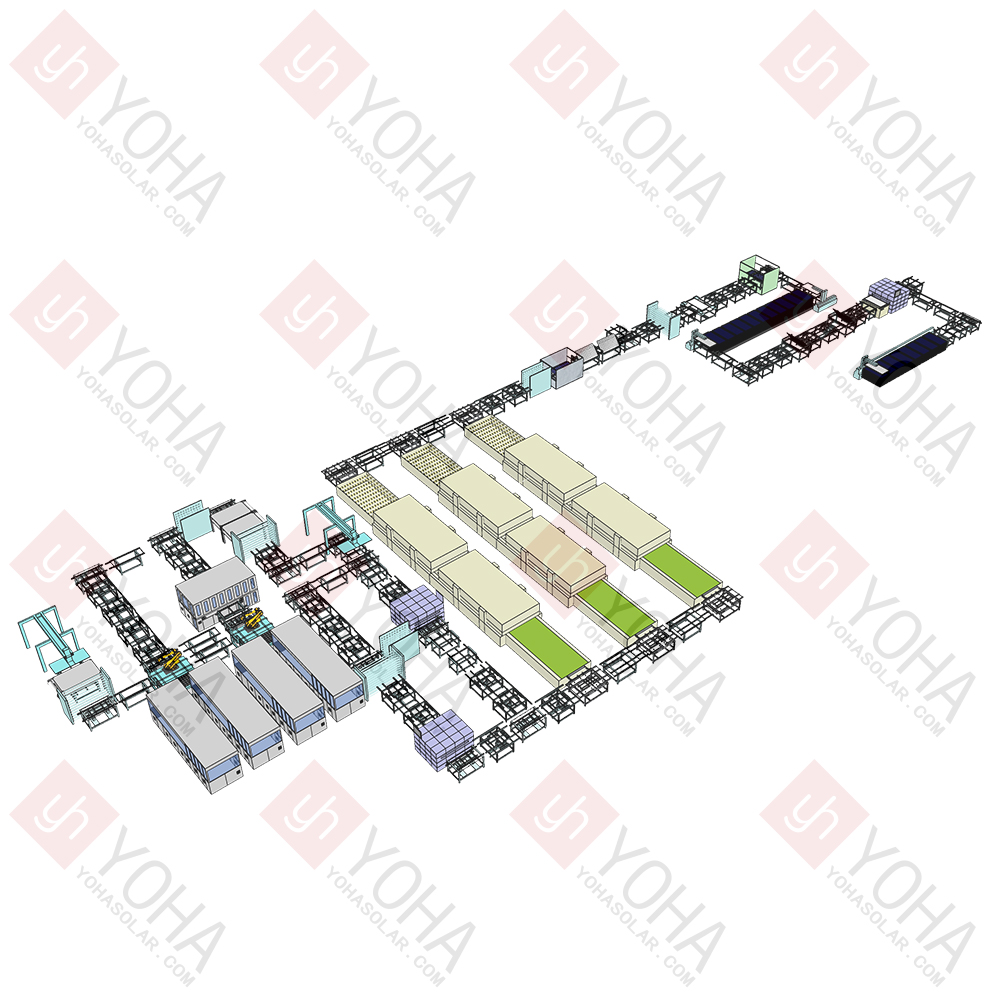Welcome to Wuhan Yoha Solar Technology Co., Ltd!
common problem
Site Map
Language:
 Chinese
Chinese
 English
English
Welcome to Wuhan Yoha Solar Technology Co., Ltd!
common problem
Site Map
Language:
 Chinese
Chinese
 English
English
In the era where the photovoltaic industry is advancing towards grid parity and accelerating technological iteration, cost reduction, efficiency improvement, and quality enhancement in the module manufacturing segment have become crucial for companies to build their core competitiveness. An efficient, stable, and intelligent automated production line for PV modules is not only a guarantee for mass production but also a key tool for enterprises to cope with market fluctuations and achieve sustainable development. However, faced with a vast array of equipment options in the market, making a scientific and systematic selection is a strategic decision critical to a company's long-term development. This article will outline a clear path for equipment selection.
I. Defining Core Requirements: Plan First, Precise Positioning
Before selecting equipment, introspection is far more important than external evaluation. Blindly pursuing the "most advanced" or the "cheapest" can lead to investment errors.
Capacity Planning & Product Positioning: First, define your target annual capacity (e.g., 500MW, 1GW, etc.) and the primary product types you will manufacture. Are you focusing on high-efficiency PERC modules, or laying the groundwork for next-generation N-type technologies like TOPCon and HJT? Or producing specific规格 products tailored for the distributed generation market? Different product technology roadmaps have vastly different requirements for production equipment in terms of process accuracy, compatibility, and cleanliness.
Investment Budget & Return Expectations: Set clear total investment limits and expected payback periods. This determines whether you opt for a top-tier "turnkey" full-line solution or a flexible, phased approach to automation upgrades.
Technology Roadmap & Future Compatibility: While assessing current mainstream technologies, it's essential to consider potential technological evolution over the next 2-3 years. Does the equipment possess a certain degree of process window adjustability and upgrade potential to avoid premature technological obsolescence?
II. Evaluating Equipment Performance: Focusing on Six Core Dimensions
Once core requirements are defined, the evaluation can delve into the specific performance of the equipment. We recommend a comprehensive assessment based on the following six dimensions:
Degree of Automation & Intelligence
This is the soul of a modern production line. Evaluate not only the automation level of individual machines but also the synergy of the entire line's material and information flow.
Material Handling Automation: From loading, stringing, and layup to lamination, framing, testing, and packaging, is material transfer fully automated using robots, AGVs/RGVs, or precise conveyor systems, minimizing manual intervention, reducing breakage rates, and labor costs?
Information Intelligence: Is the equipment equipped with MES (Manufacturing Execution System) interfaces, capable of real-time collection, monitoring, and analysis of production data (e.g., power, EL images, yield rate), enabling process transparency, traceability, and intelligent decision-making?
Production Precision & Stability
Precision determines quality, and stability ensures continuous output.
Process Precision: For instance, the welding precision of stringers, placement accuracy of busbars; temperature control accuracy and pressure uniformity of laminators; alignment precision of layup stations. These directly impact module power output, risk of micro-cracks, and long-term reliability.
Operational Stability: Are key components (e.g., servo motors, precision guides, vacuum systems, control systems) from internationally renowned brands? What is the Mean Time Between Failures (MTBF)? High stability is the foundation for ensuring continuous operation and achieving capacity targets.
Production Efficiency & Cycle Time
Efficiency directly relates to capacity and cost.
Single Machine Cycle Time: Focus on the output per hour (in cells or modules) of core equipment like stringers and laminators, as this determines the bottleneck of the entire line's capacity.
Overall Line Balancing: Excellent full-line design ensures highly matched production cycle times across all process steps, avoiding the "bucket effect" where one slow machine drags down the entire line's output.
Technical Compatibility & Flexibility
Markets and technologies evolve dynamically; equipment needs a certain degree of "adaptability."
Size Compatibility: Can it handle current silicon wafer sizes from M10, G12 to potentially larger future sizes? How convenient is the changeover?
Technology Compatibility: For welding equipment, can it handle different processes like Multi-Busbar (MBB), Busbar-less (0BB), and shaped ribbons? For testing equipment, can its light source spectrum accurately simulate the different characteristics of N-type and P-type modules?
Changeover Flexibility: What is the required adjustment time and difficulty when switching between different product models? Flexible equipment helps you respond quickly to changing market orders.
Energy Consumption & Operating Costs
"Green manufacturing" is not just a social responsibility but also a tangible source of profit.
Specific Consumption Indicators: Focus on the unit energy consumption (e.g., electricity per module) of high-energy-consumption equipment like laminators and testers. Equipment utilizing advanced heating technology and energy-saving designs can save significant electricity costs over the long term.
Consumable Cost & Lifespan: Understand the replacement cycles and procurement costs of required wear parts and consumables (e.g., soldering tips, belts, vacuum pump oil), calculating the total lifecycle operational and maintenance expenses.
After-Sales Service & Technical Support
Even the best equipment cannot function without professional support.
Response Speed & Spare Parts Inventory: Can the supplier provide prompt technical support and on-site service? Is there a local spare parts inventory to reduce downtime?
Technical Training & Software Upgrades: Does the supplier offer comprehensive operation and maintenance training? Can they provide continuous software upgrade services to optimize equipment performance and fix potential bugs?
III. Building the Selection Decision Framework: From Evaluation to Partnership
Transform the above dimensions into actionable steps:
Build Internal Consensus: Form a cross-functional selection team involving production, technology, procurement, and finance to jointly develop evaluation criteria and weightings.
Multi-Channel Information Gathering: Collect information on equipment suppliers widely through industry exhibitions, technical forums, professional media, and peer communication.
In-Depth Technical Exchange & Proposal Review: Invite shortlisted suppliers for detailed technical proposal presentations. Conduct multiple rounds of review of their proposals, focusing on how they address your core requirements and potential pain points.
Site Visits & Field Verification: "Seeing once is better than hearing a hundred times." Arrange for your team to visit factories already using the equipment (with permission) to observe the actual operating status, and communicate with on-site engineers about their real-world experience, particularly regarding equipment stability, yield rate, and service support levels.
Comprehensive Scoring & Commercial Negotiation: Create a scoring card to quantitatively rate each supplier's equipment across the six dimensions. Finally, make the optimal decision considering commercial terms like price, payment terms, and delivery schedule.
Conclusion
Selecting an automated production line for PV modules is essentially an investment in the company's future. It is not a simple procurement act but a complex engineering project requiring strategic vision, systematic thinking, and rigorous demonstration. The best equipment is not necessarily the one with the most dazzling specifications, but rather the solution that best aligns with your company's current situation and future blueprint, achieving the optimal balance between reliability, efficiency, cost, and intelligence. Only then can the manufacturing foundation you build support your enterprise to navigate the vast and dynamic waves of the photovoltaic industry, sail steadily towards long-term success, and win the future.
TOP
18086473422
MESSAGE
